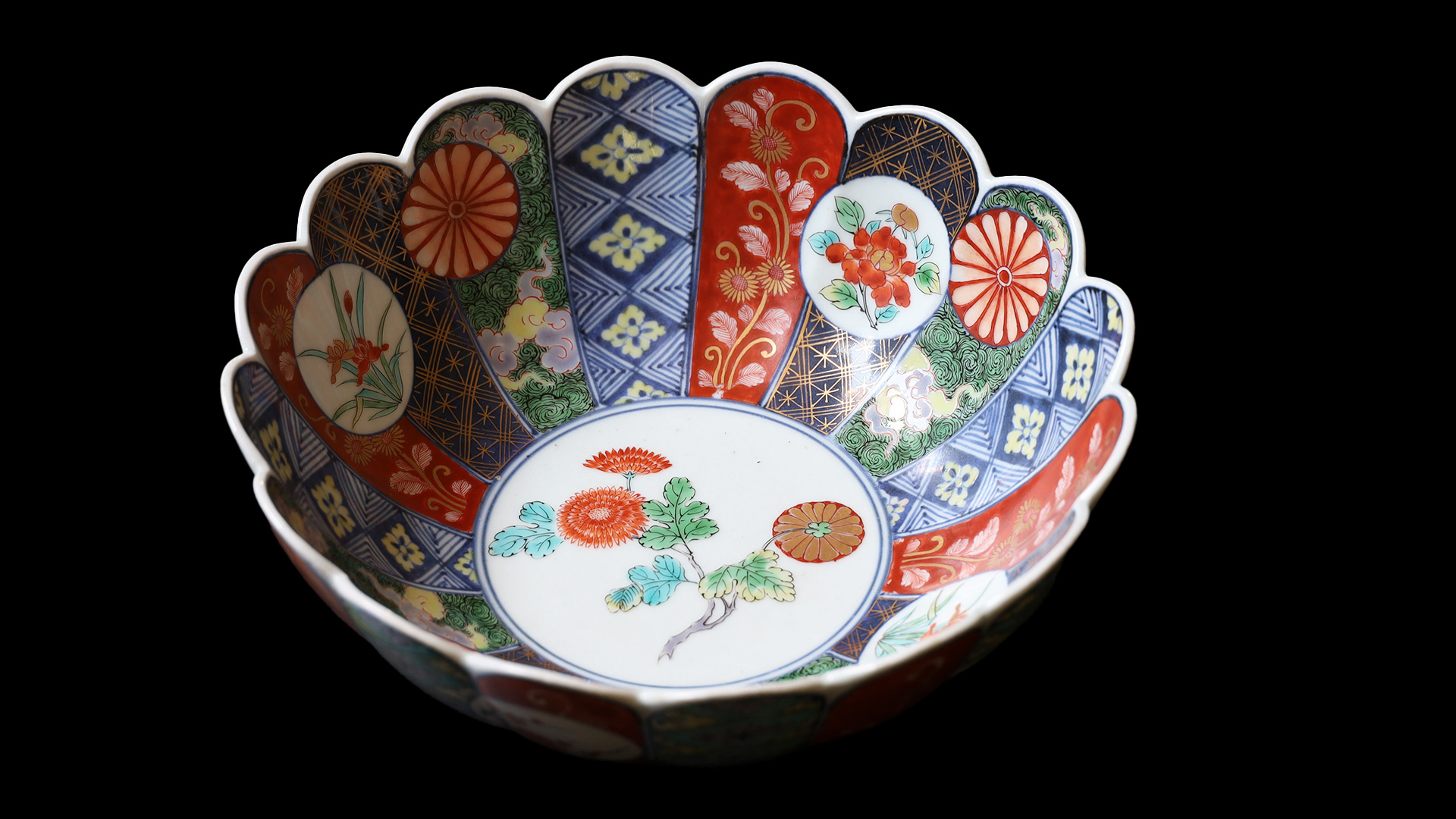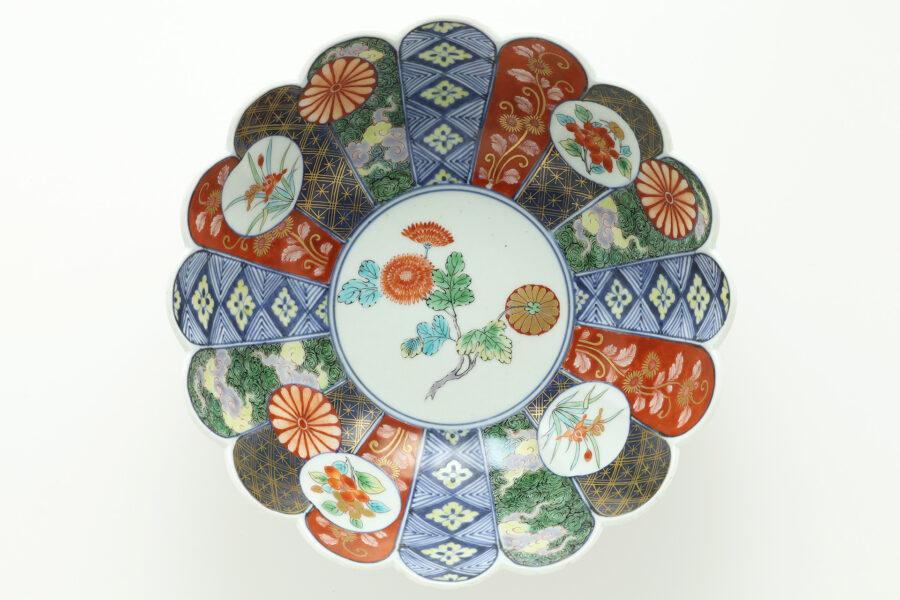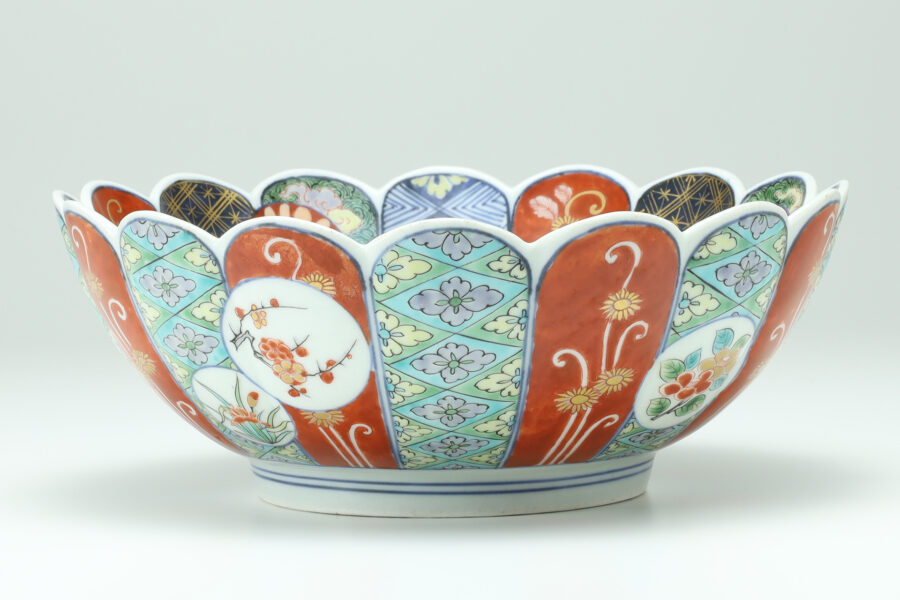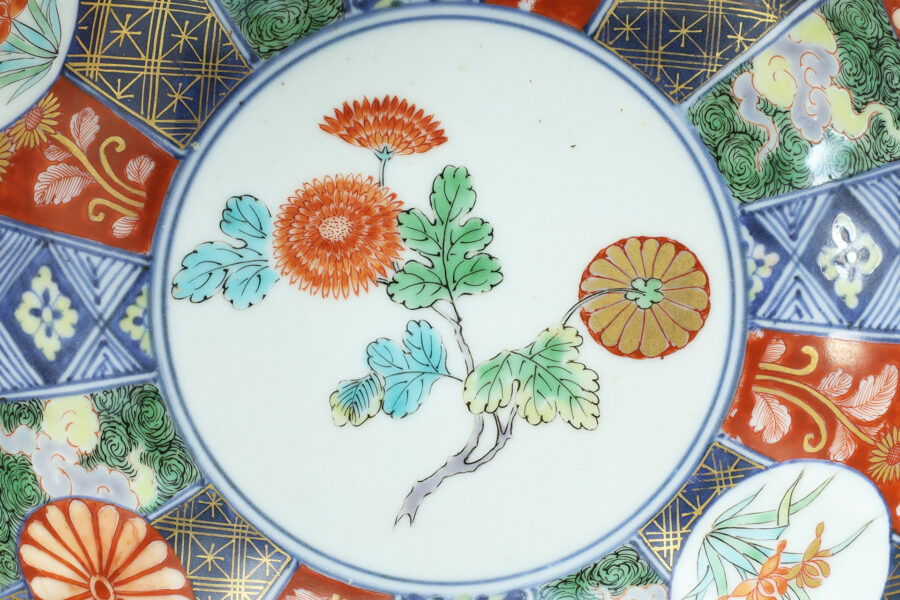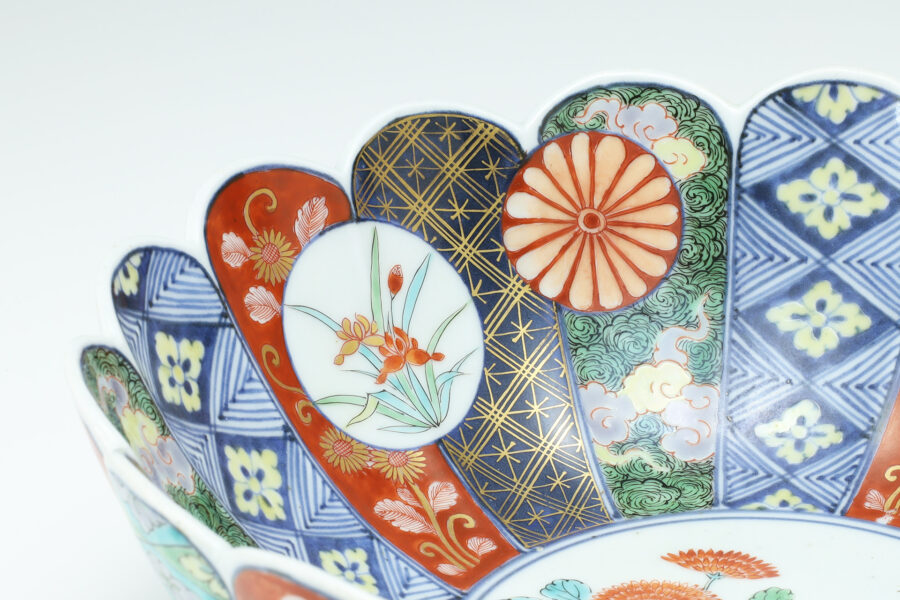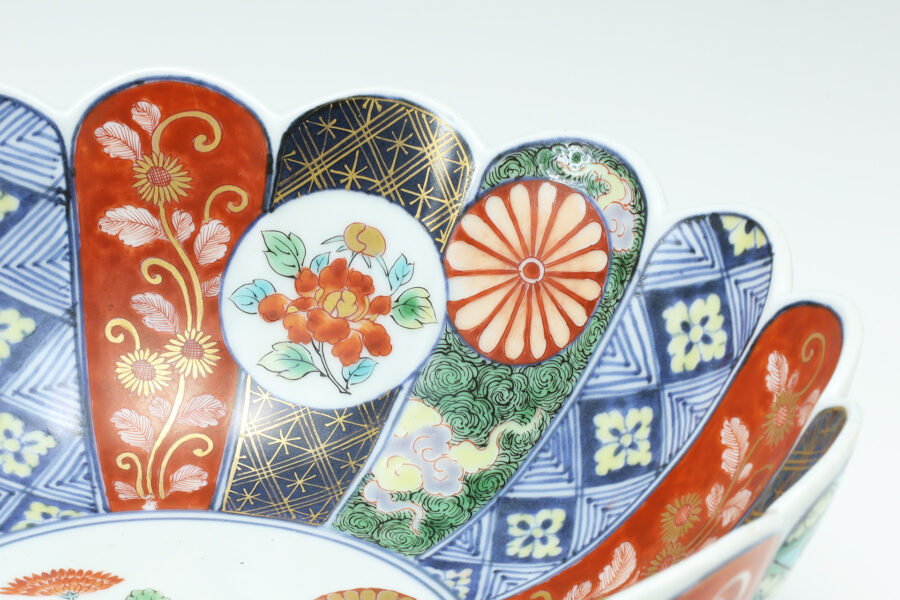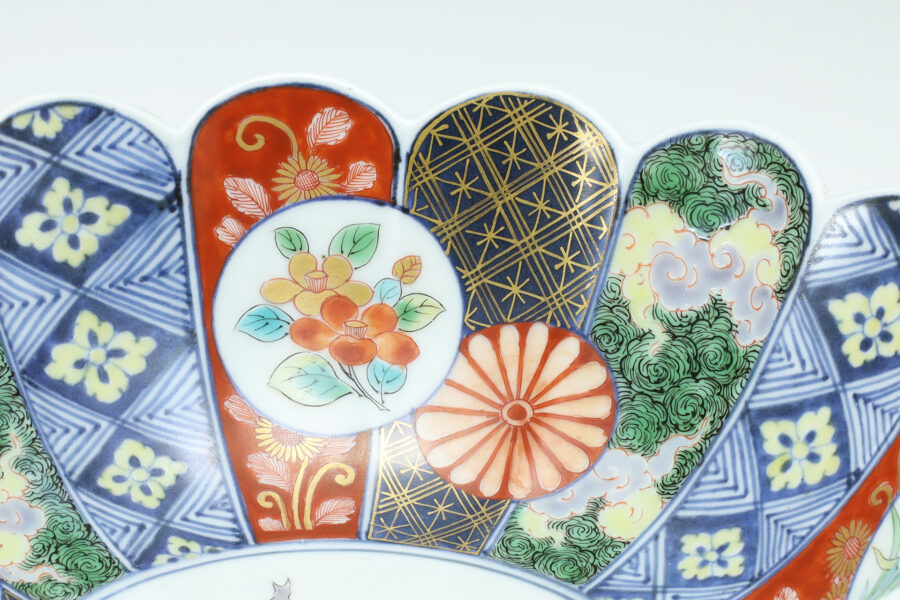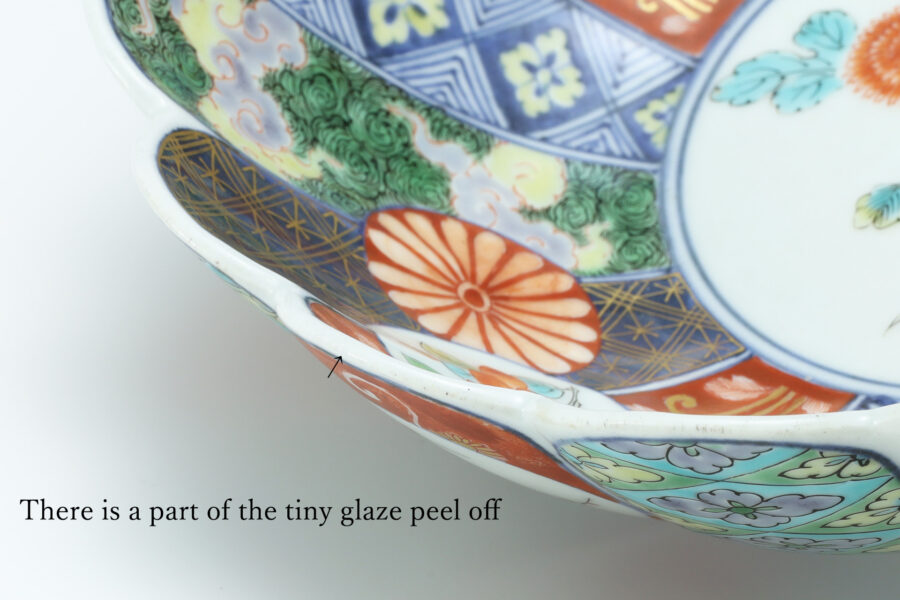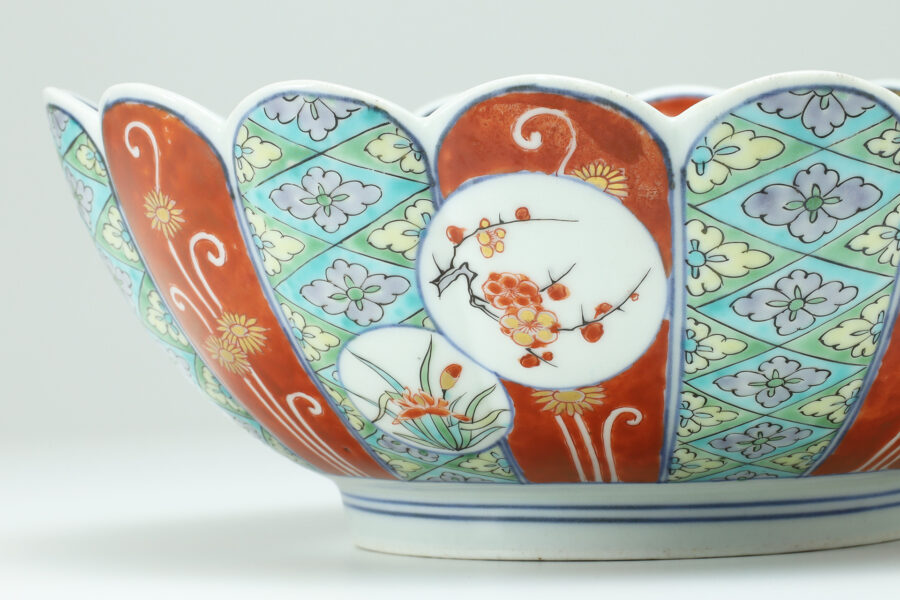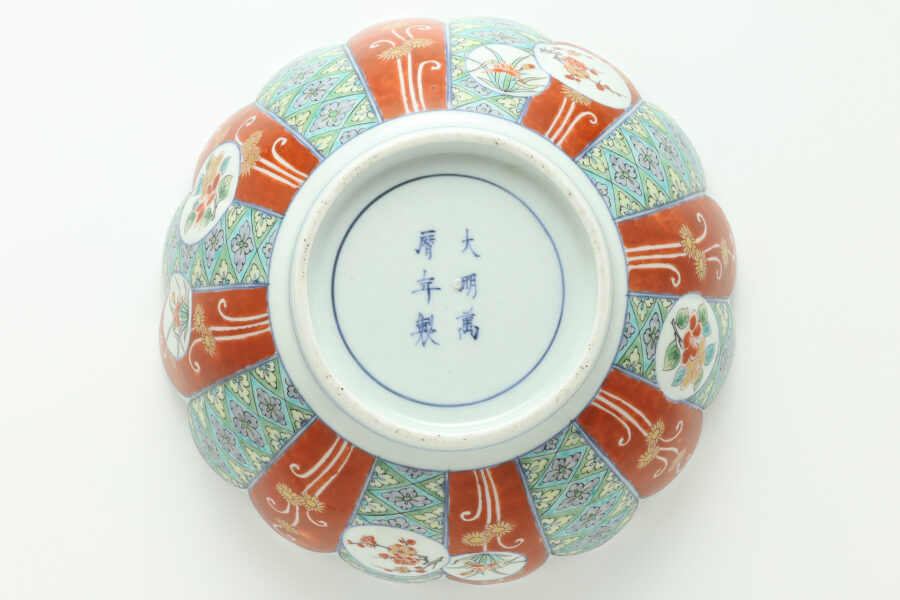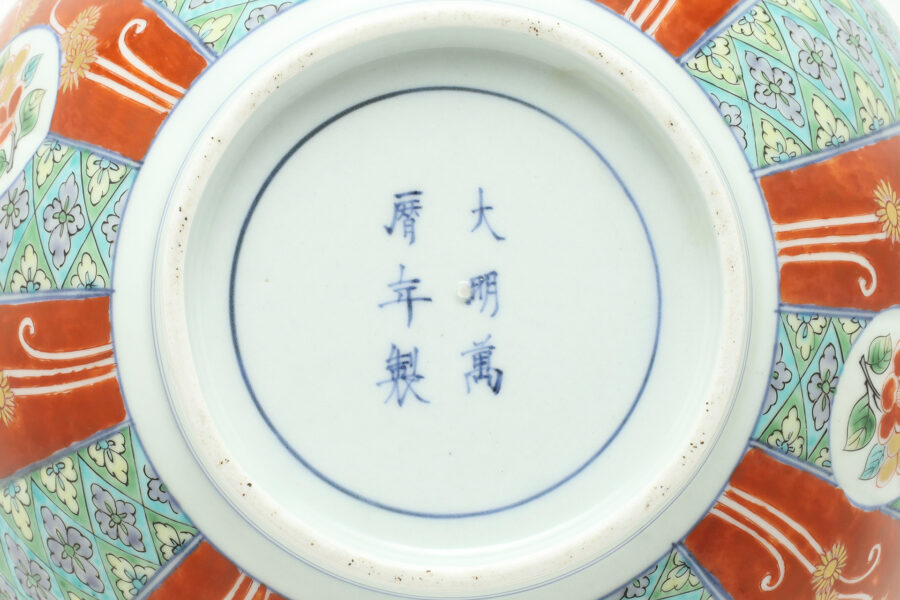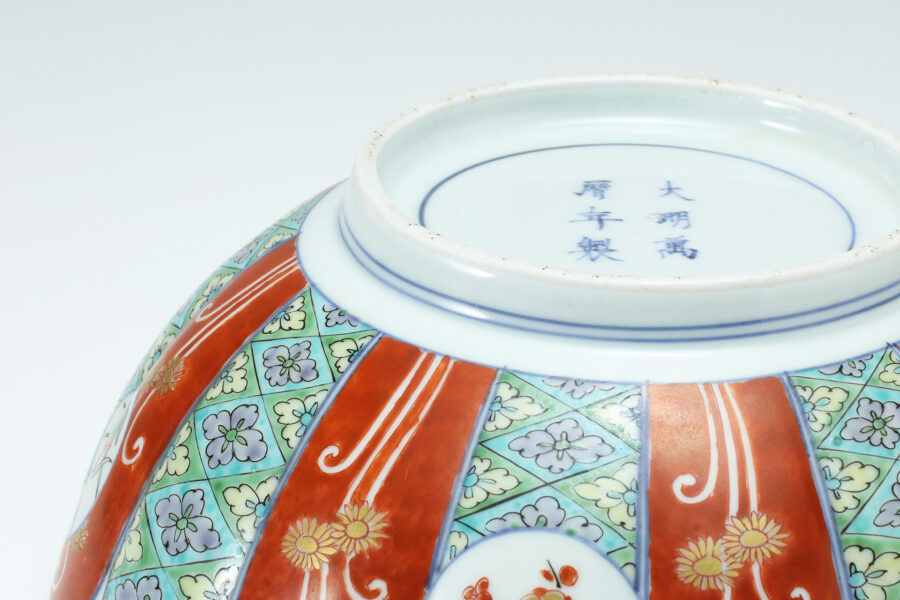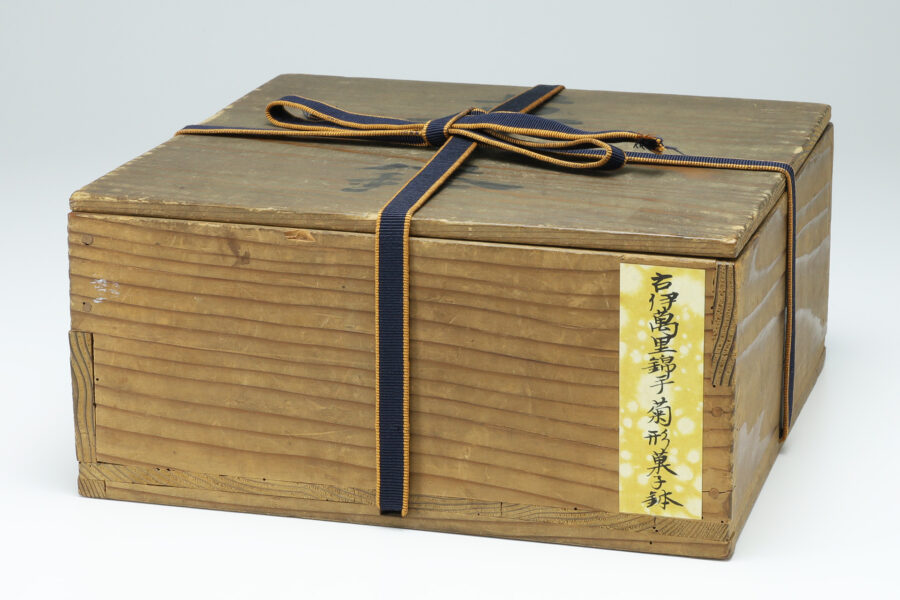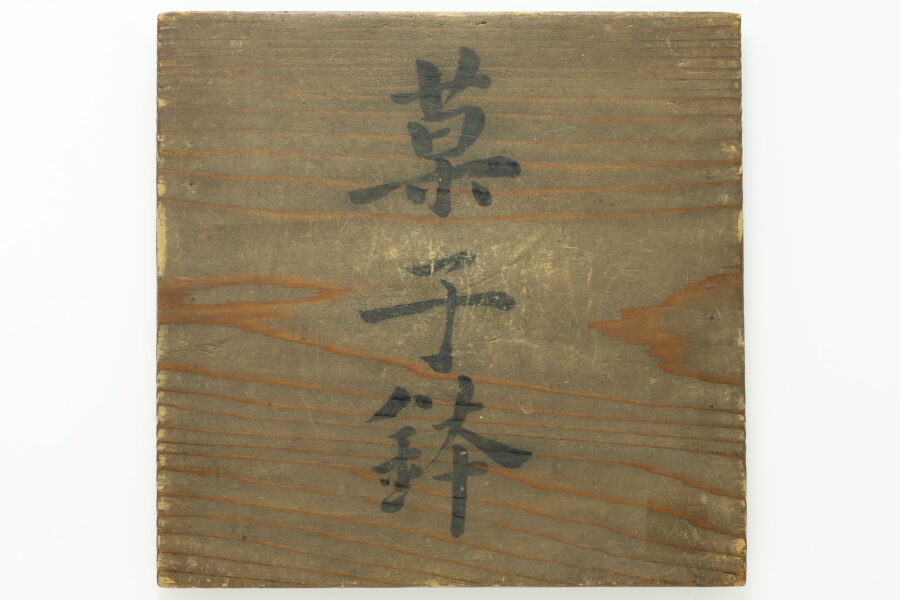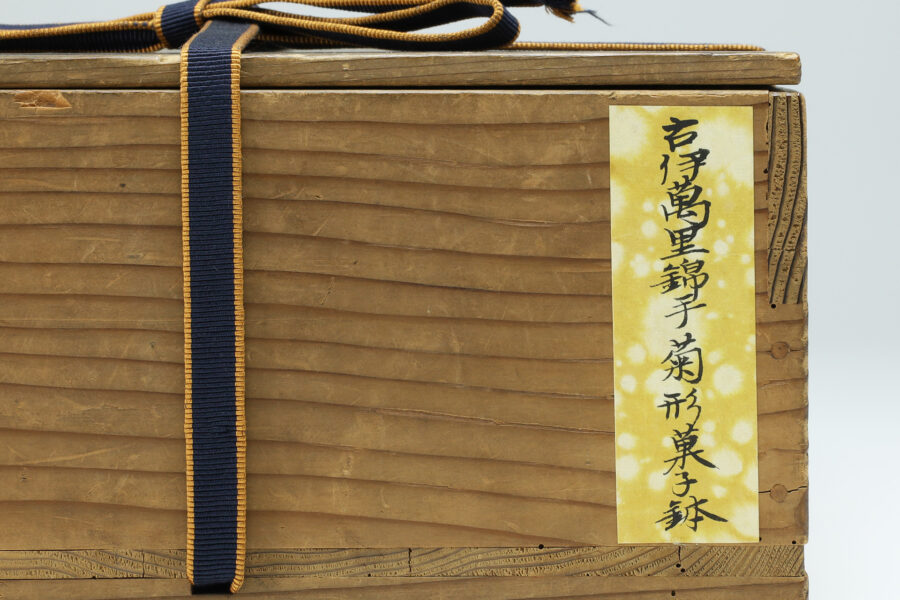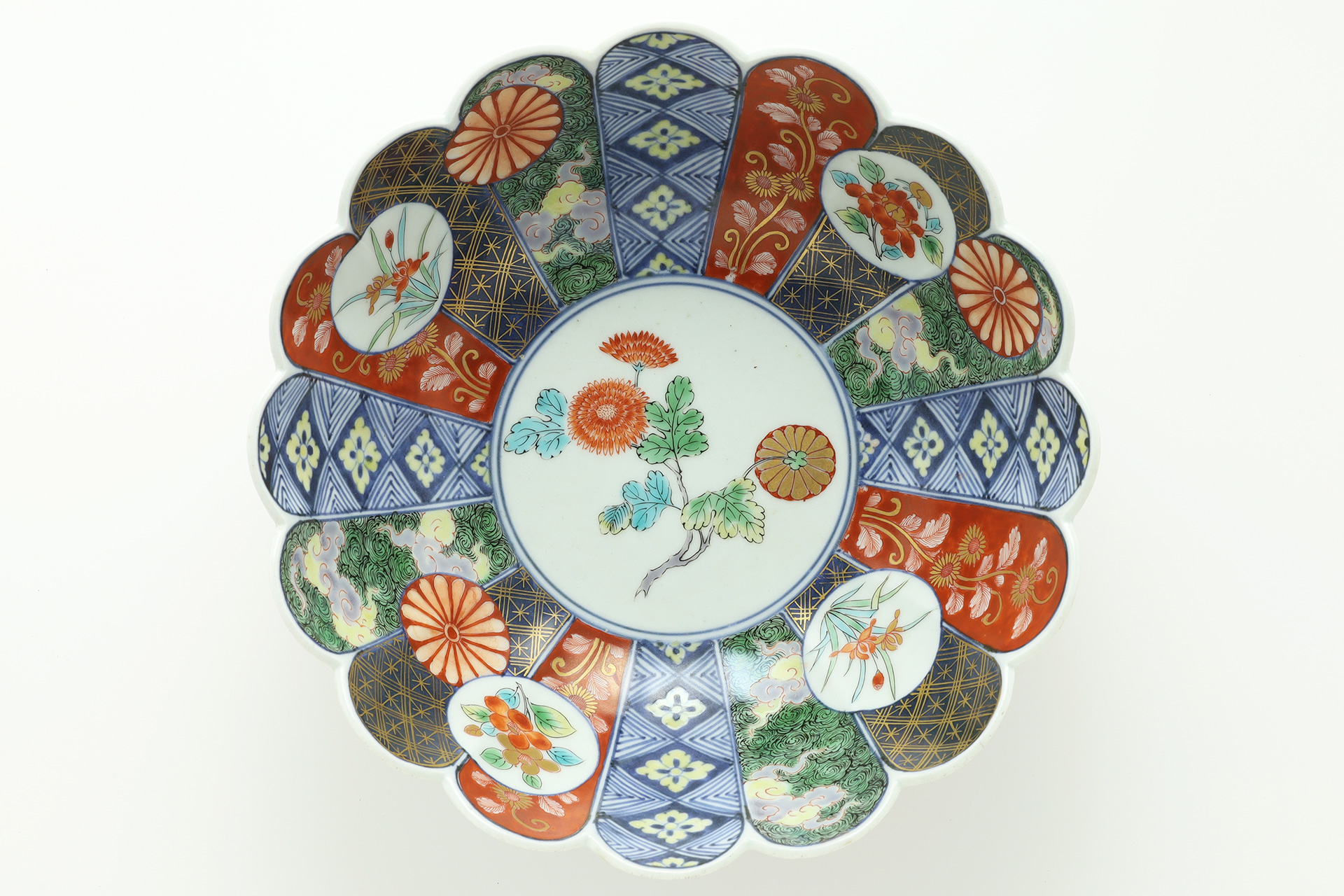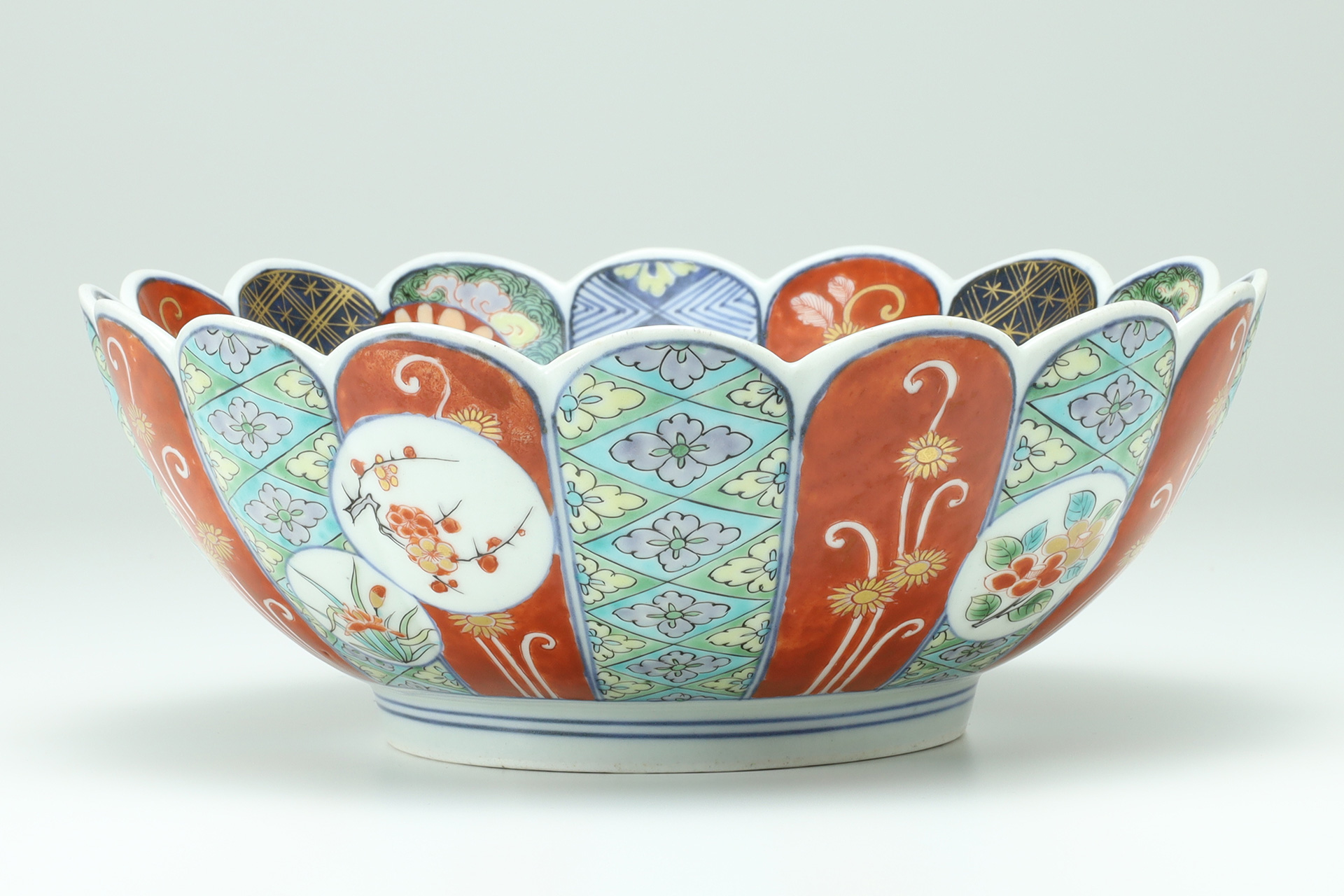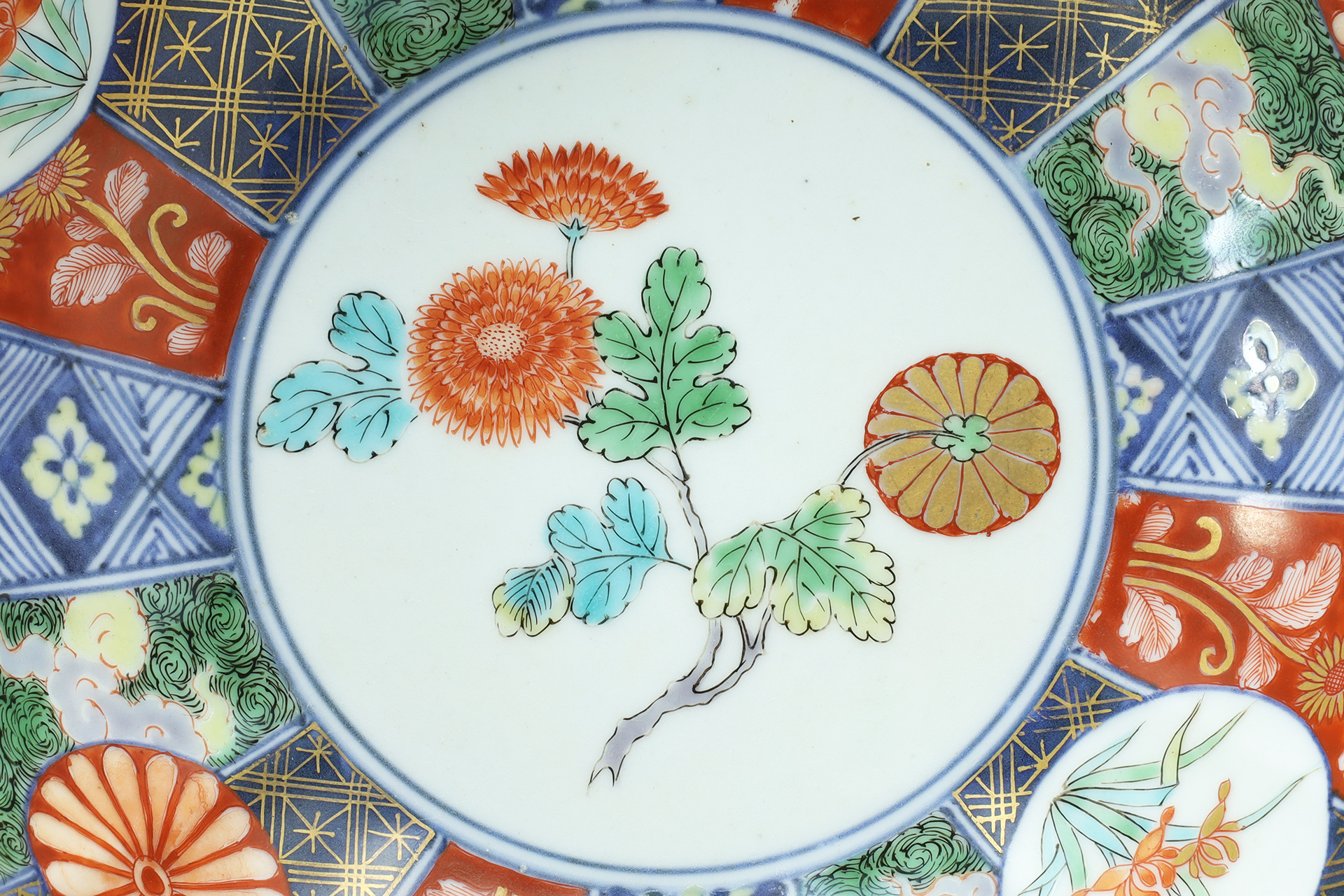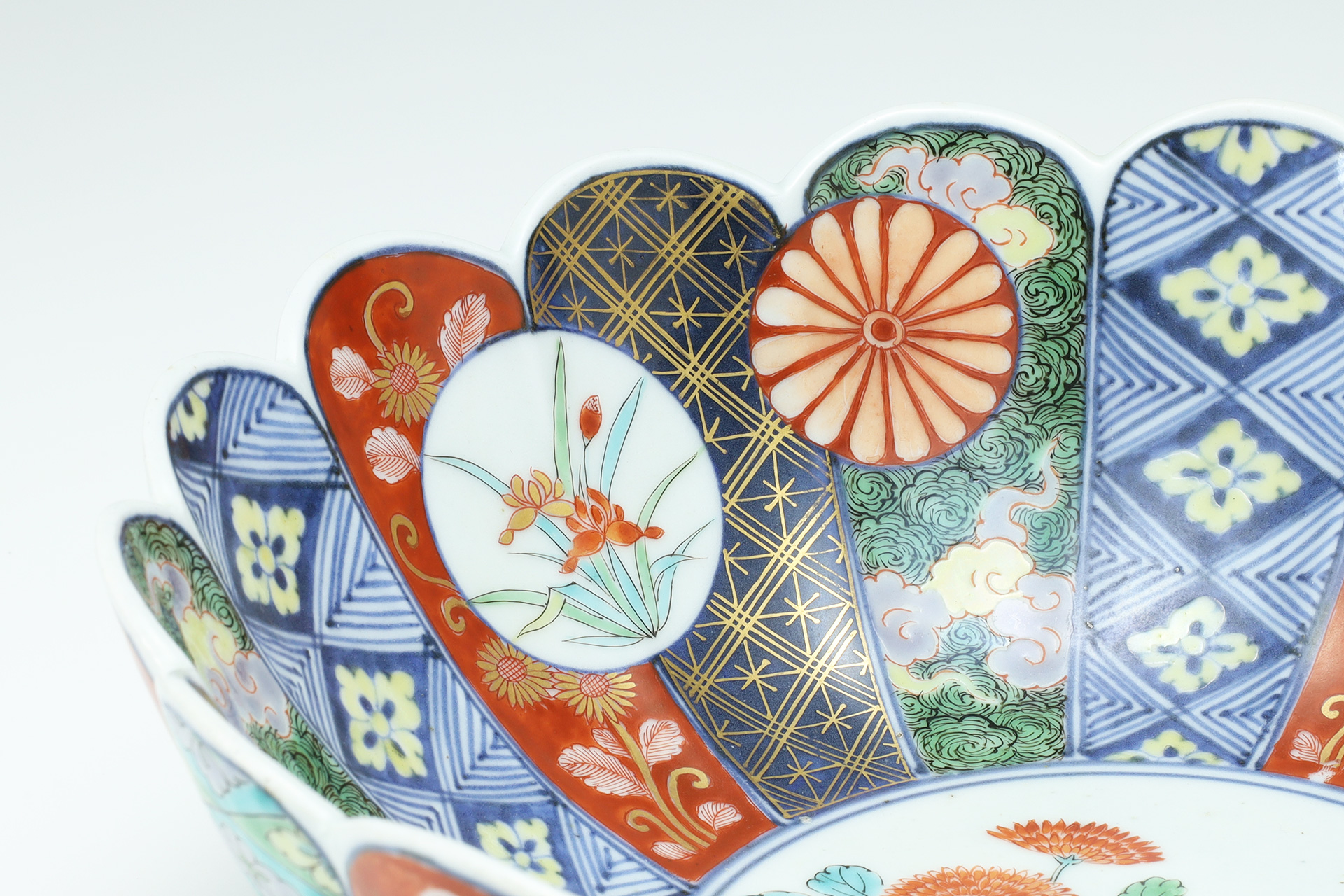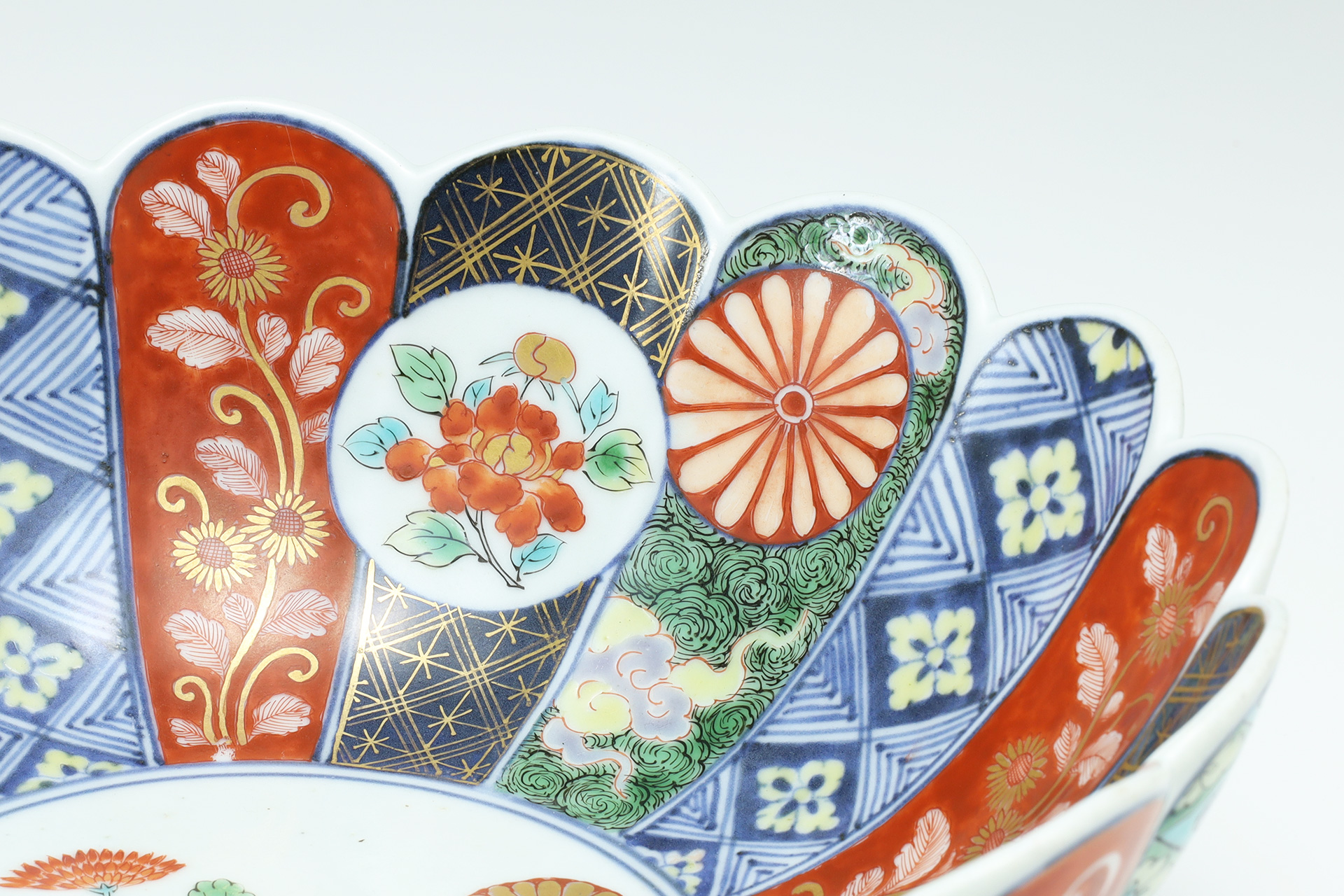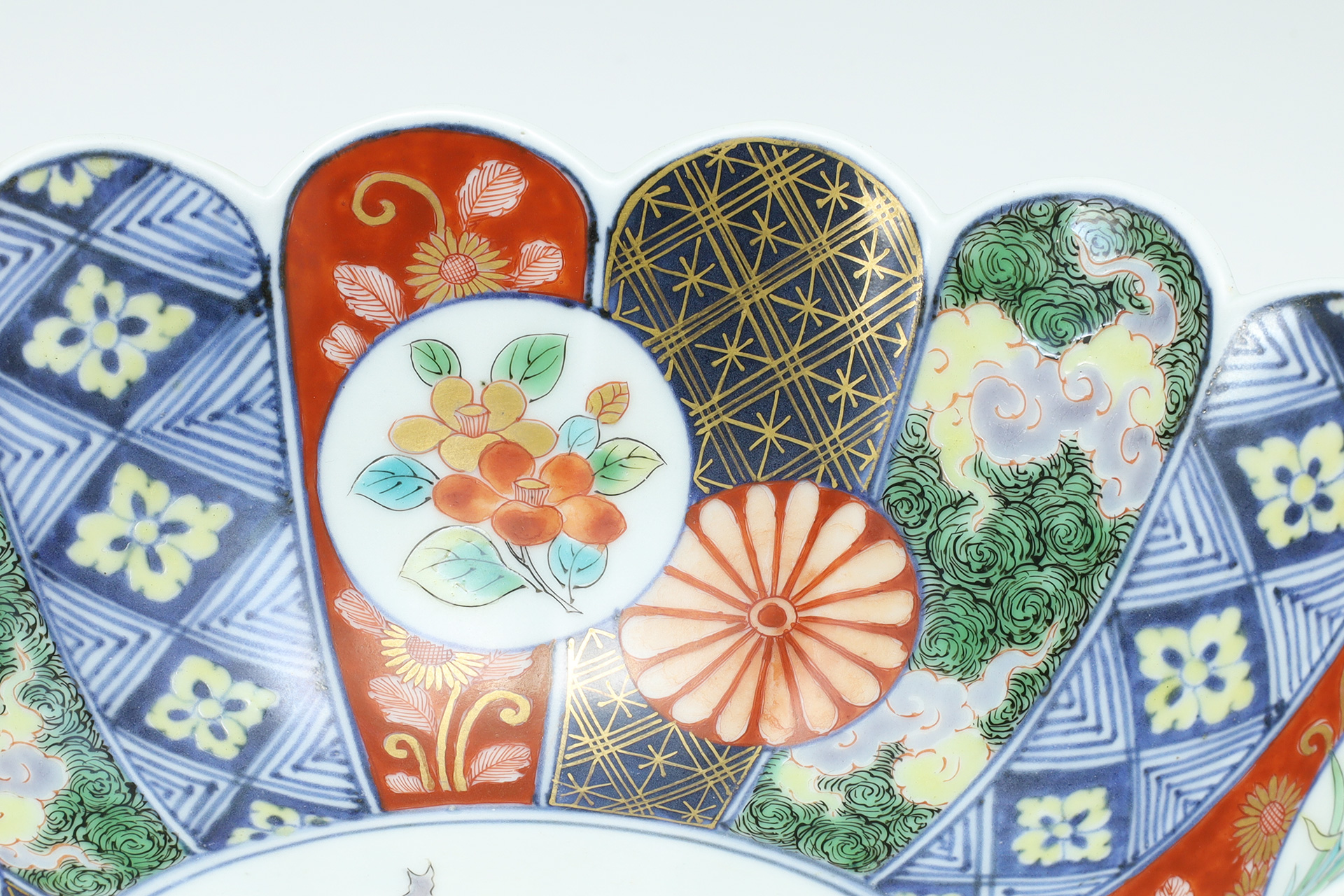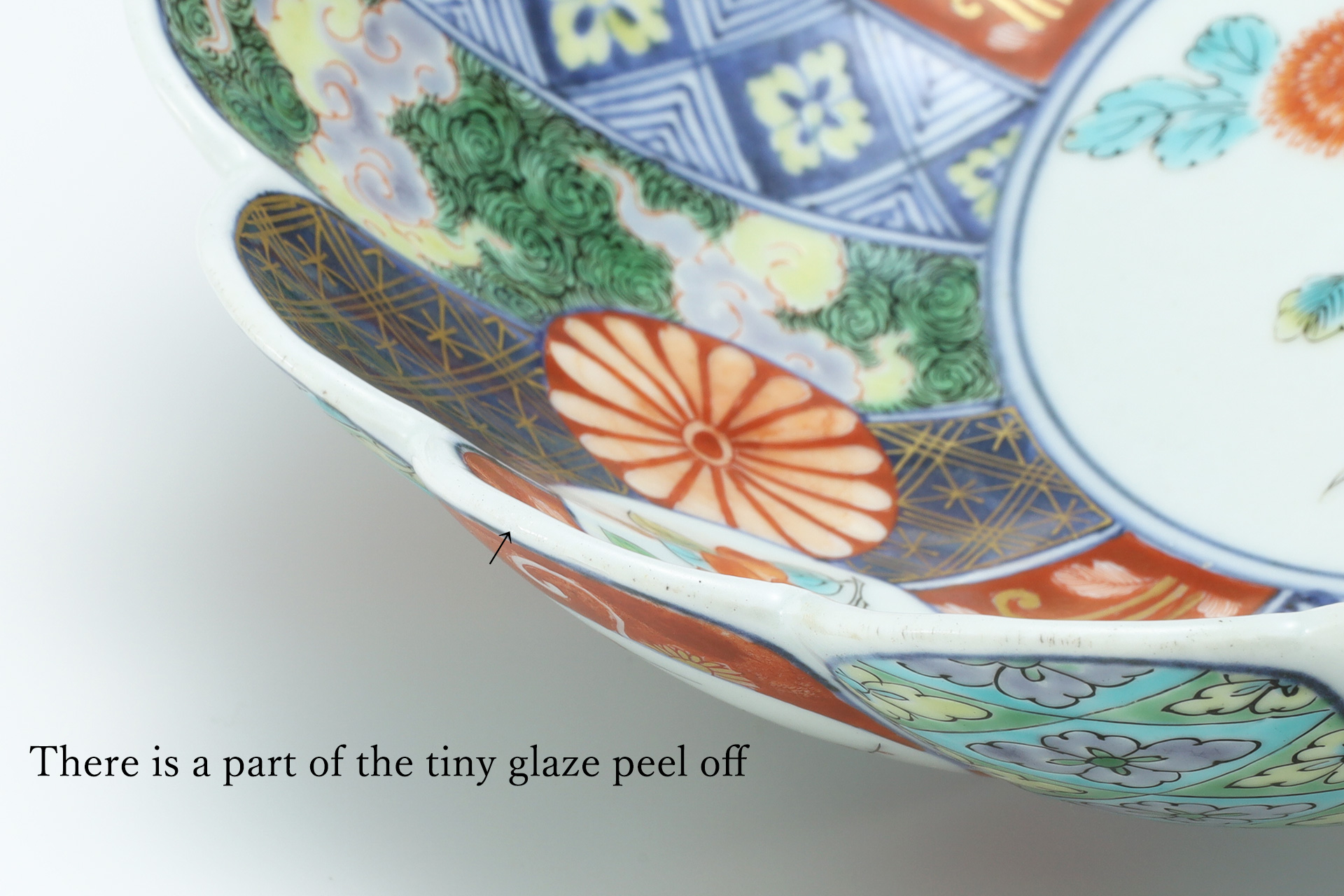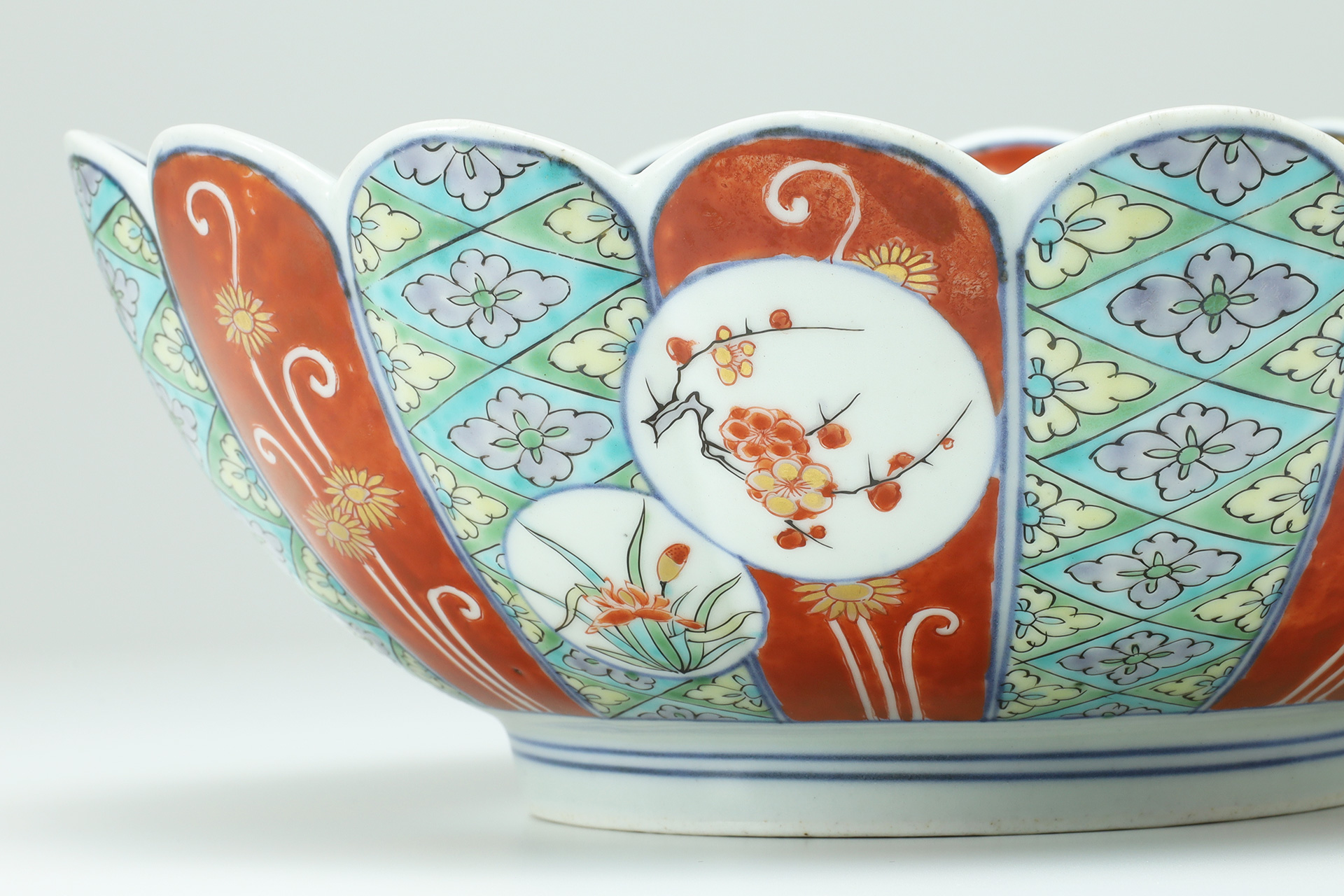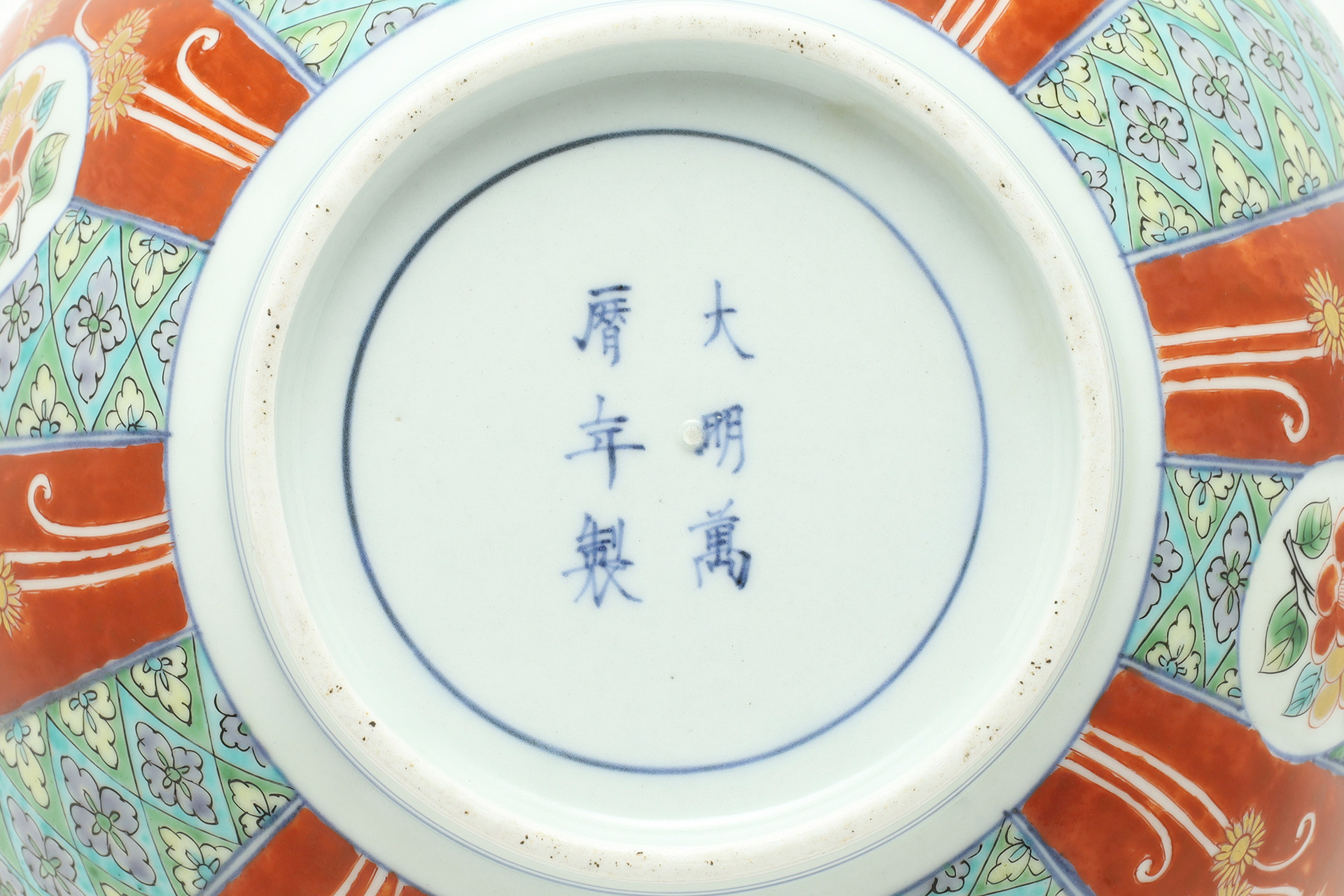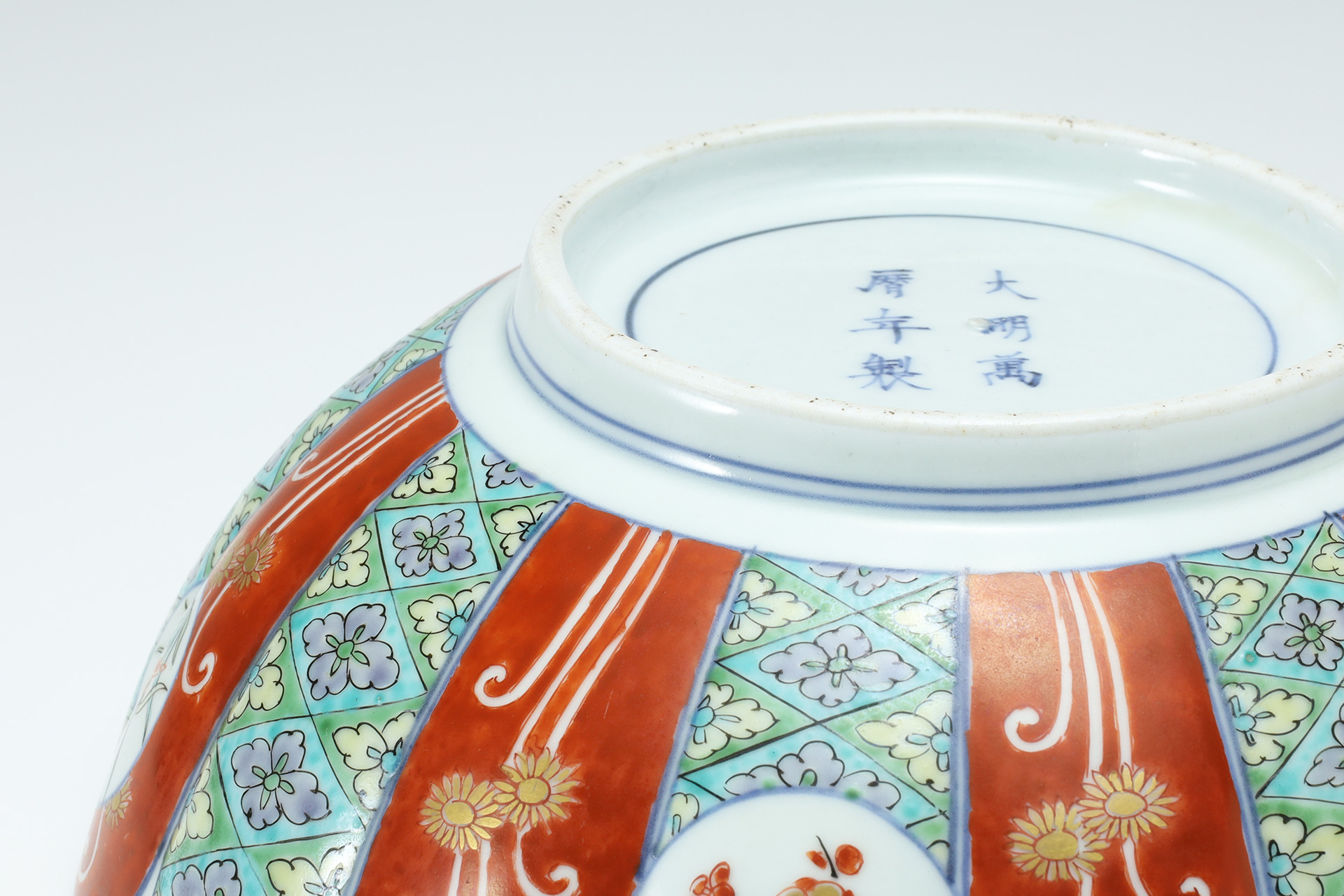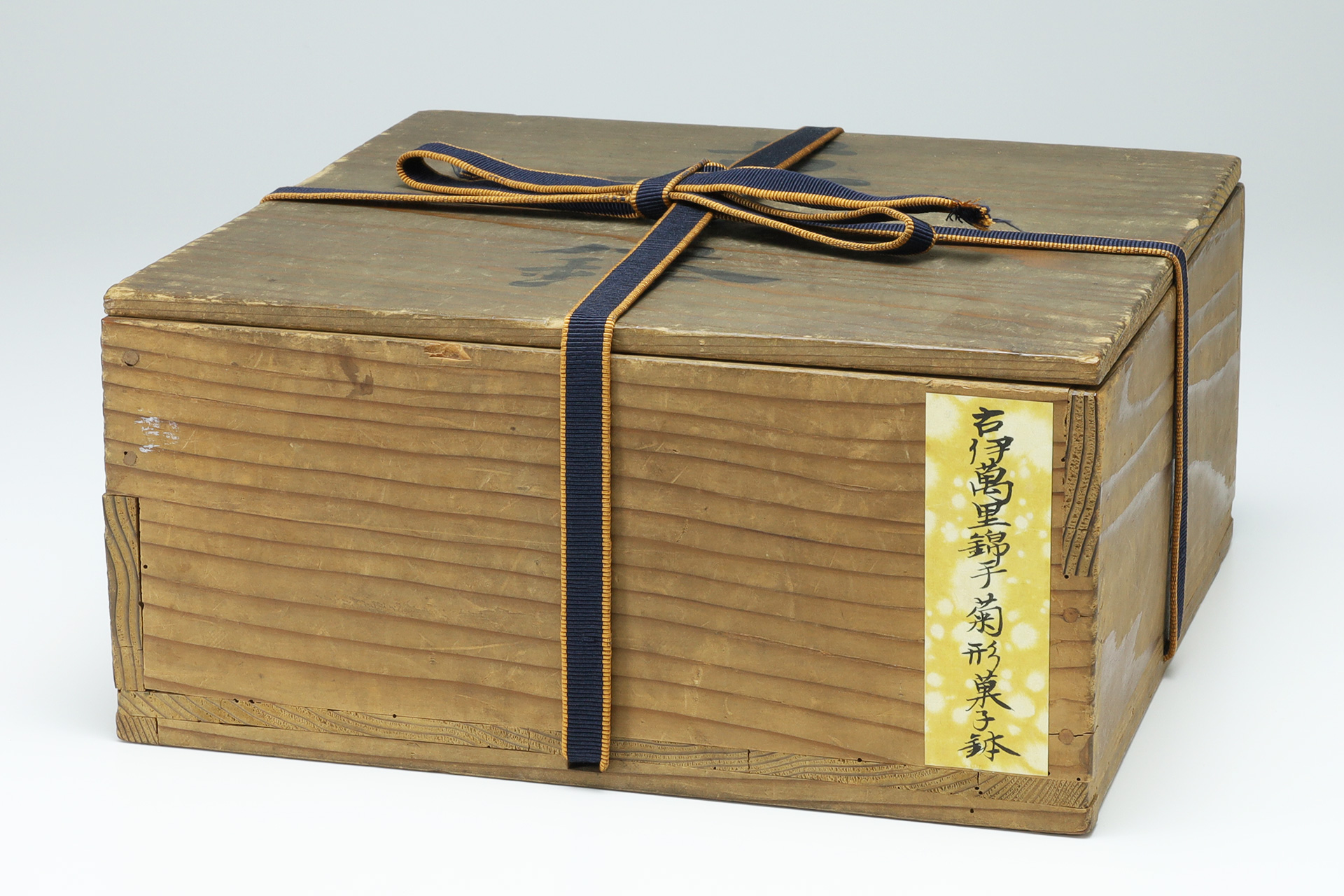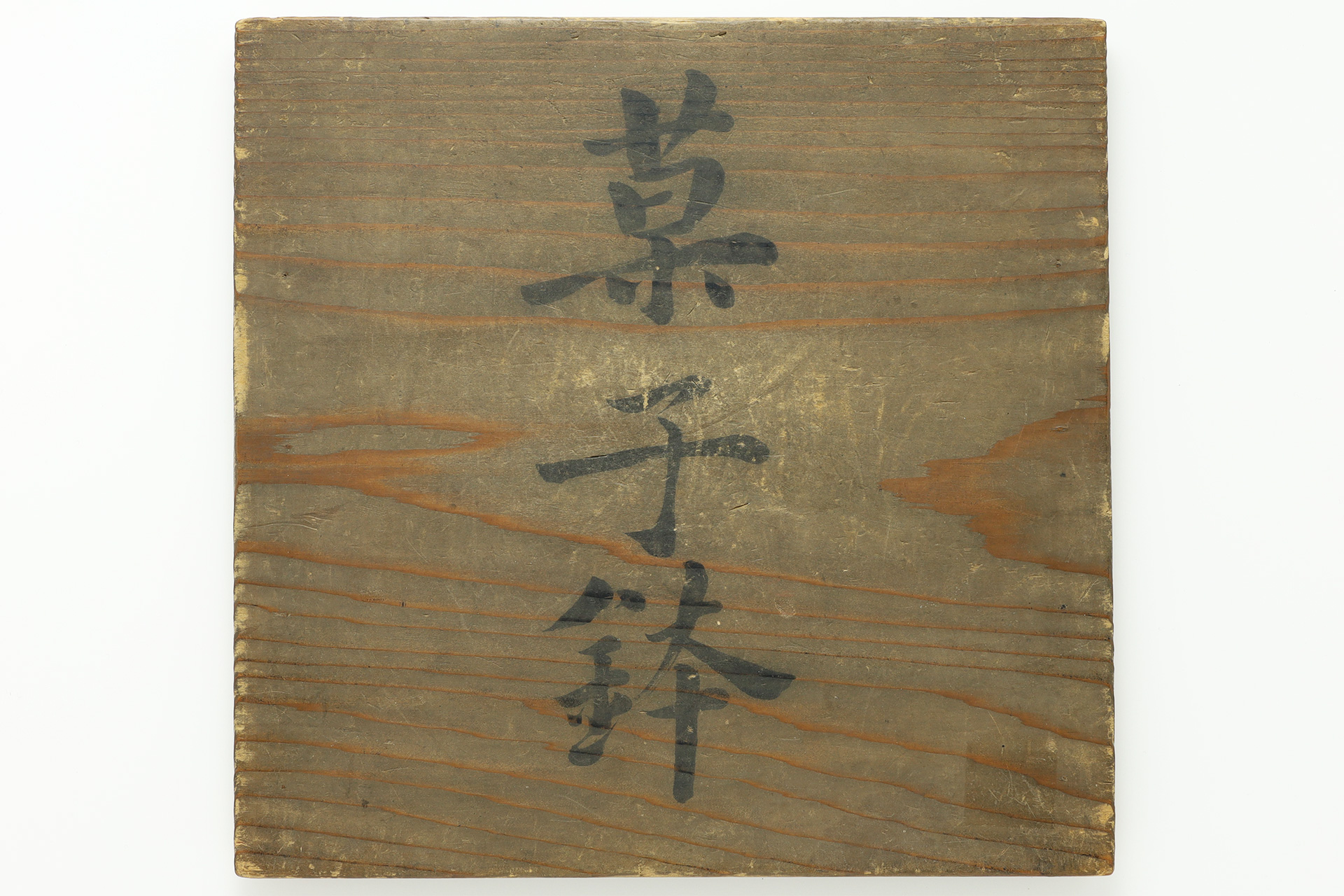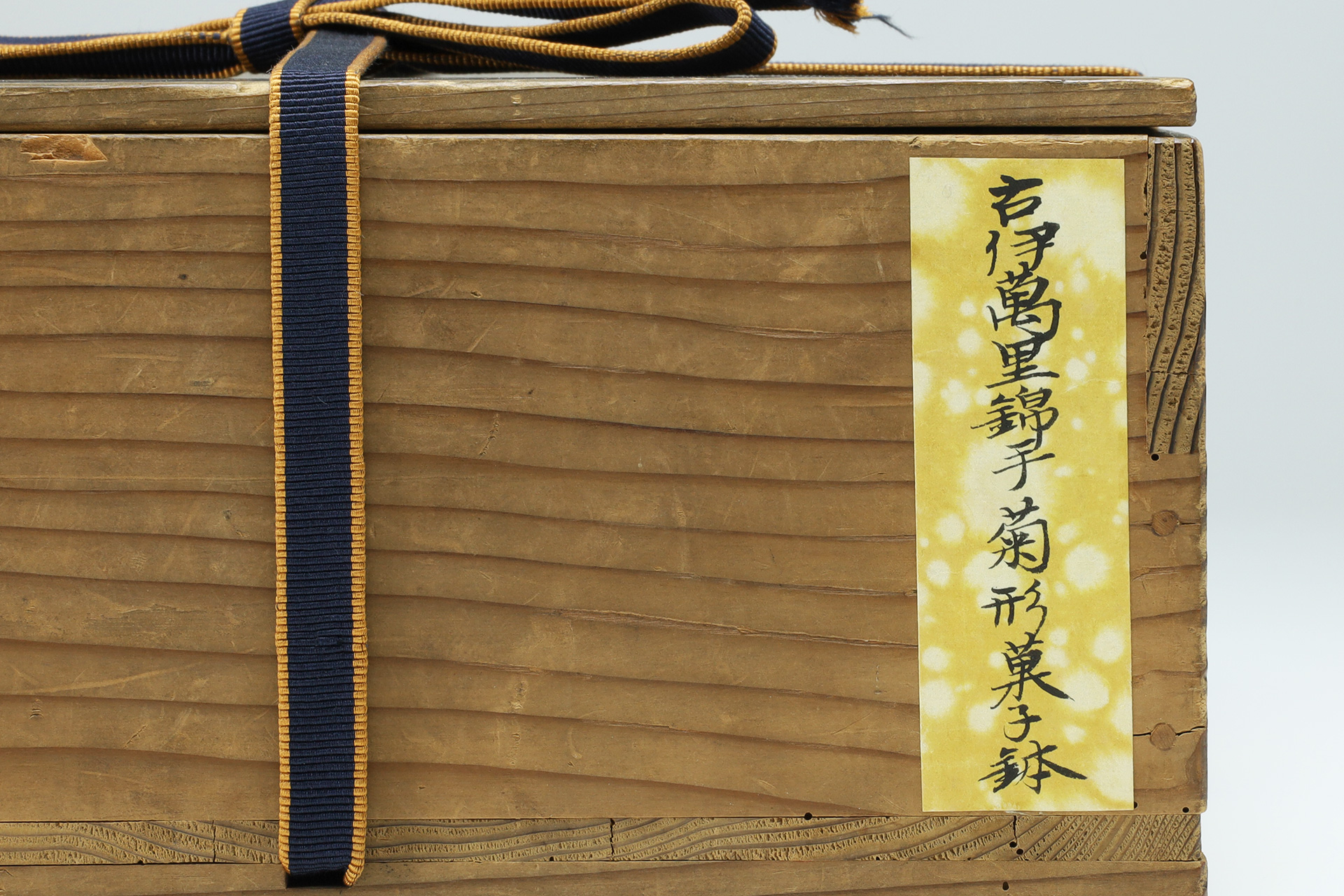Old-Imari Chrysanthemum shaped Bowl with Design of Chrysanthemum(Edo Period)
Sold Out
This is the finest and most elegant old-imari, which is considered the masterpiece from the genroku era(1688-1704). It has a solid sense of weight, and the inside and outside are composed of detailed designs. Breaking away from the kinrande produced in jingdezhen kiln during the jiajing era(1522-66)of the ming dynasty, they have created unique designs that show the reach of old-imari.
Inquiry
- Product Code
- 240108-3
- Period
- Edo Period
End 17th century-Early 18th century
- Weight
- 952g
- Diameter
- 22.5×22.2cm
- Height
- 8.7cm
- Bottom Diameter
- 10.8cm
- Description
- Old Wooden Box
- Provenance
- Kochukyo
- Condition
- Excellent Condition
There is a part of the tiny glaze peel off at the edge
It meets the requirements of the first class work with its sophisticated and rigorous modeling, beautiful glaze, excellent condition.
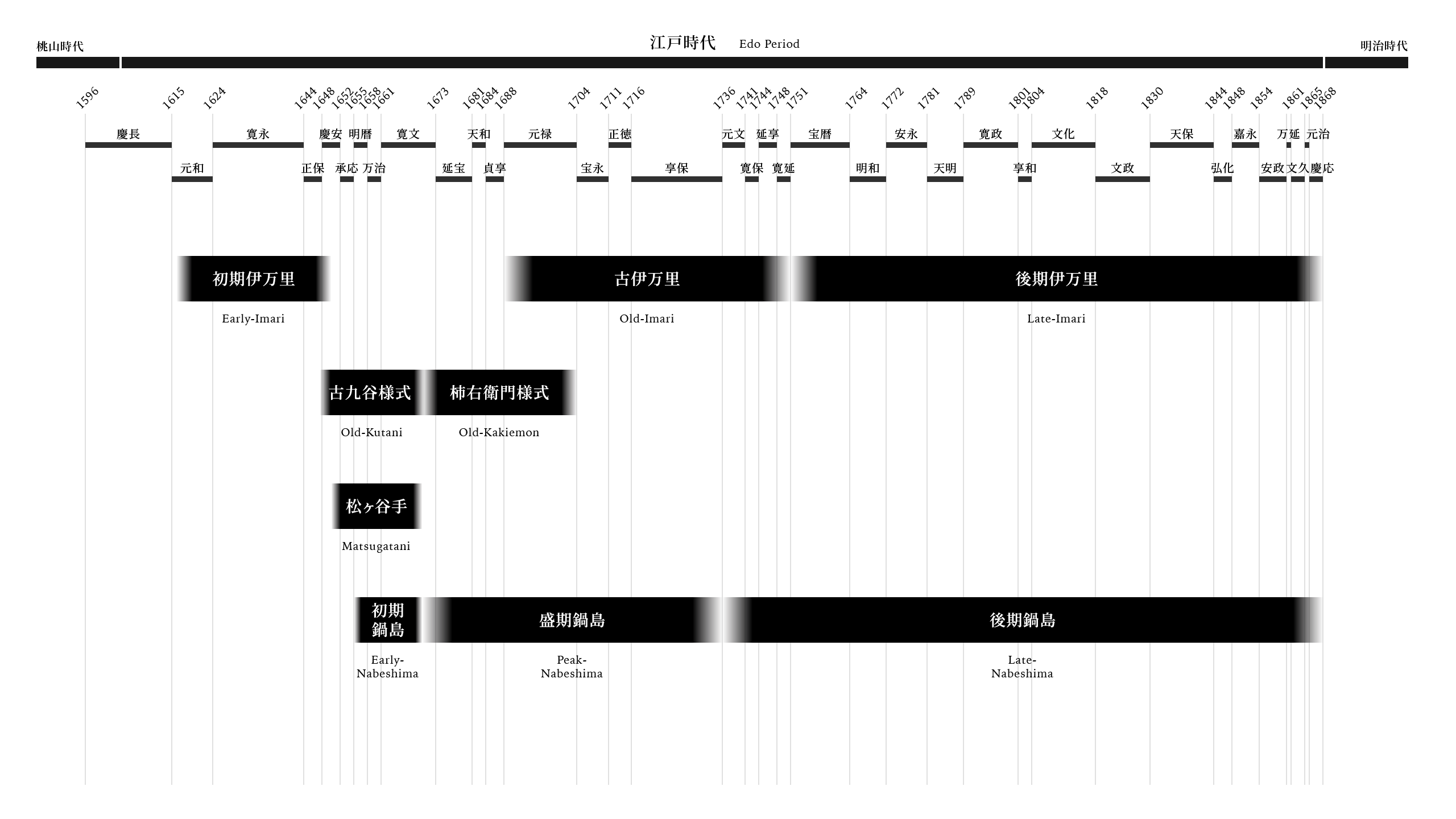
The Genroku era(1688-1704)saw unprecedented economic prosperity, ushering in a luxurious era in which wealthy merchants drove the culture. The katamono during this period is the highest peak of old-imari. The theme of this work is the noble chrysanthemum.
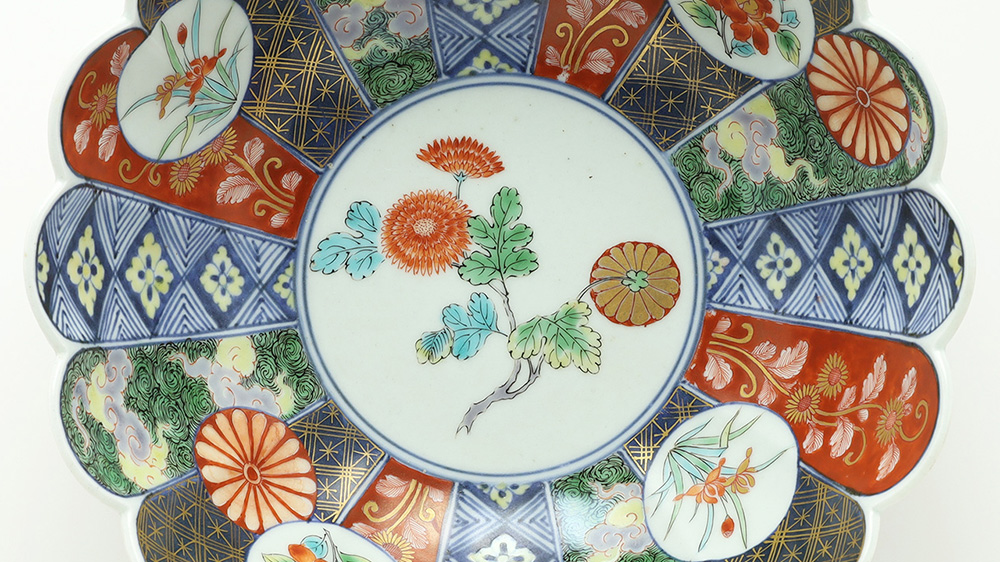
The chrysanthemum shaped with 16 petals made by stamping molding. This complicated shape often caused cracks in the kiln during the production process, and it is assumed that production efficiency was poor. The chrysanthemum emblem in the imperial family also has 16 petals.
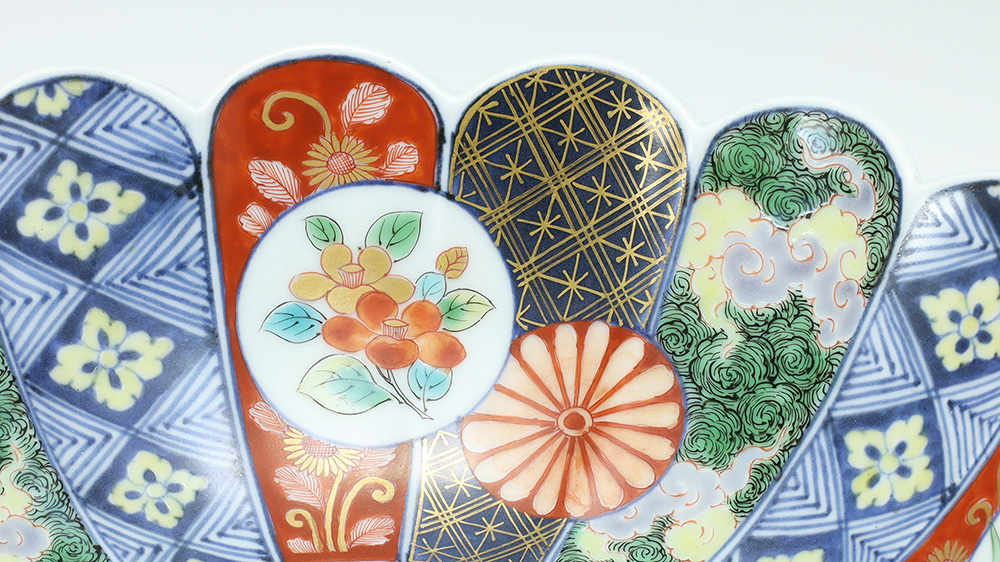
You can see 1 small meato at the bottom. Aiming for chinese porcelain, hizen porcelain became wider at the bottom of its dishes, and in order to prevent the bottom from sagging during firing, a technique was developed to attach a conical support called “Hari” made from the same material as porcelain. The smaller the meato, the better the work, which shows that this work is of high quality.
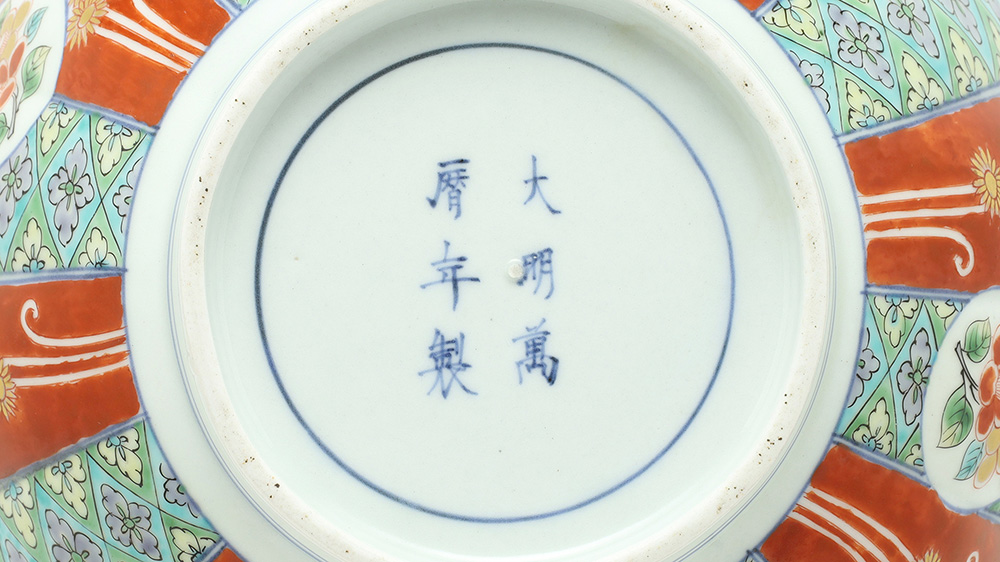
The cedar box from the edo period shows that it has been cherished as a bowl for sweets since ancient times. It has been prized as a status symbol for the wealthy.
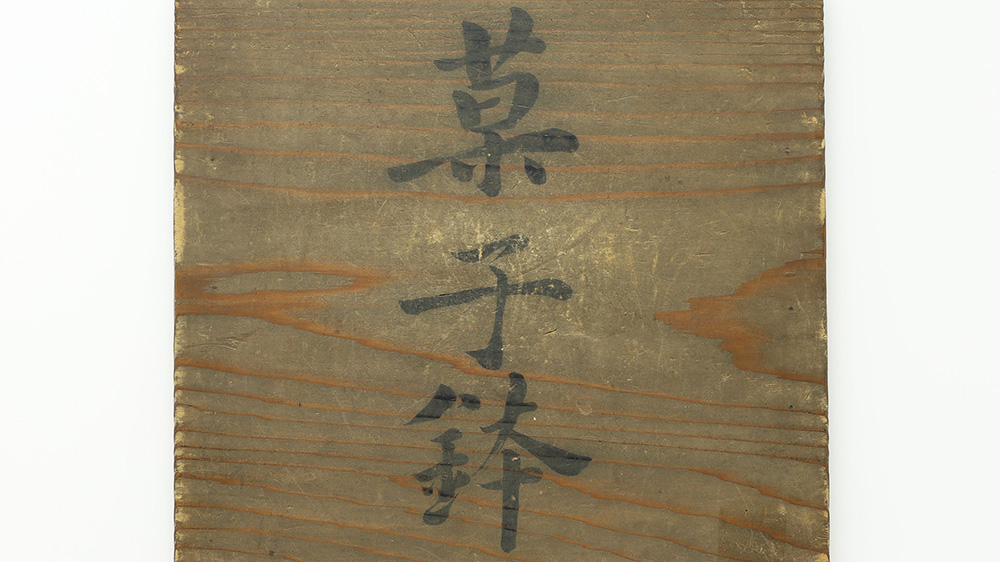
It has a provenance and is handled by kochukyo.
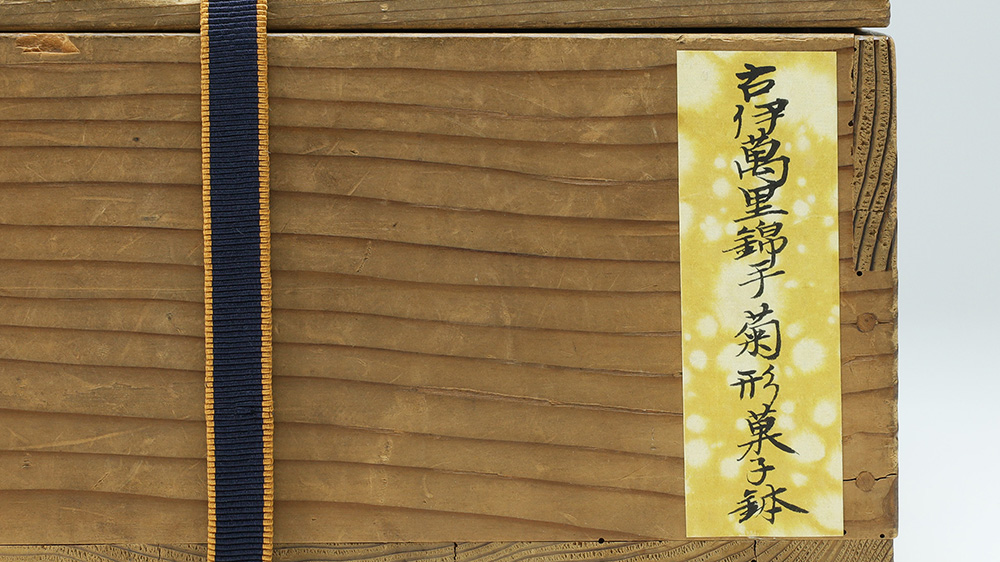
Katamono
Katamono is the old-imari of the highest quality made for domestic use, mainly using the overglaze enamels and gold technique with a rich color scheme. It has the meaning of “the famous work that fits the mold of the masterpiece(meets high standards)”, and works that conform to this are also called “Jun-Kata”. Unlike the old-imari, which were mass produced for export to europe, these works were refined for the wealthy, such as feudal lords and influential merchants. Although it was not actually intended to be presented to the tokugawa shogunate or various domains, it is called “Kenjode(Offering)” because it is a high quality work that is equivalent to the offering. Meticulous and detailed patterns stand out in each design, with themes such as “Gososen(Five Sailing Boats)”, “Kinkosennin(Chinese Hermit)”, “Araiso(Carp Leaping Among the Waves)”, “Akadamaunryu(Dragon and Red Circle)”, “Kotobuki(Congratulations)”, “Takaradukushi(Ancient Treasure from Japan)”, “Himezara(Princess Shaped Dish)” and “Yumihama(Bow and Arrow Displayed During the New Year’s Holiday)”. Bowls can be round, helmet shaped, shaped like spinning top, or flat. They were prized as bowl for sweets for tea ceremonies, gifts for celebrations, and as bowl for banquets. Even after the Genroku era(1688-1704), katamono Style became the main type of imari ware. However, as the times change, the quality declines.
Old-Imari
Old-imari refers to the porcelain produced in arita, hizen province, during the middle edo period. While it is known for domestic works such as katamono, its main focus was on a variety of export works that stimulated a taste for exoticism. As arita porcelain secured its place in the global market as the best alternative to jingdezhen porcelain, a division of labor system was established by skilled artisans to mass produce high quality works. Old-imari is characterized by the extensive use of overglaze enamels and gold on blue and white porcelain, exemplified by the dazzling “Kinrande”. Reflecting the cultural prosperity of the Genroku era(1688-1704), it created a world of elegance and splendor. Originally, this decorative technique was perfected at the jingdezhen kiln during the Jiajing era(1522-66)of the ming dynasty, and is filled with the luxurious taste of fired gold foil. In europe, the porcelain room, where the interiors of palaces were decorated with porcelain, became popular among royalty and nobility as a symbol of wealth and power. Here, porcelain served not only as art objects displayed on shelves and walls but also as furnishings for entertaining guests. Consequently, many works can be found with worn out colors and gold due to age related deterioration. The terms “Old-Imari”, “Old-Japan” and “Imari-Ware” are still used today as affectionate names for hizen porcelain by pottery enthusiasts and collectors both in japan and abroad.



